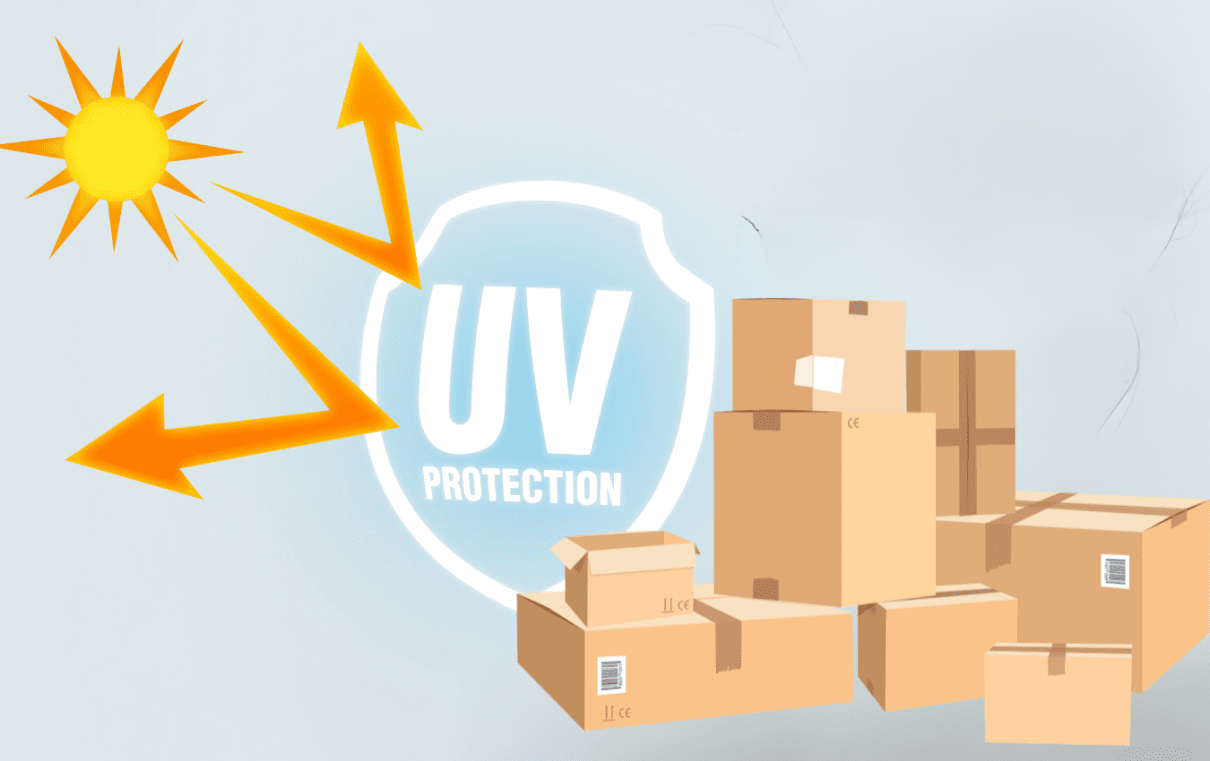Home » Protecting Your Packaging from UV Damage: Essential Strategies
Protecting Your Packaging from UV Damage: Essential Strategies

Ultraviolet (UV) rays can have detrimental effects on product packaging, leading to faded colors, weakened materials, and compromised product integrity. In industries where products are frequently exposed to sunlight, such as in retail storefronts or during transportation, safeguarding packaging from UV damage is crucial. This blog post delves into various strategies and solutions for protecting packaging from the harmful effects of UV rays.
Understanding UV Damage in Packaging
UV rays can cause various types of damage to packaging materials. Common issues include discoloration of inks and dyes, degradation of plastic materials, and weakening of structural integrity. Over time, this can result in unappealing product presentation and potential product spoilage, which can adversely affect consumer perception and brand reputation.
Materials Resistant to UV Damage
Choosing the right materials is the first line of defense against UV damage.
- UV-Resistant Plastics: Some plastics are formulated to resist UV damage. Materials like PET and certain grades of polyethylene can offer better protection against sunlight.
- UV Inhibitors: For plastic packaging, consider using materials treated with UV inhibitors. These additives absorb or block UV radiation, helping to prevent degradation.
- Metal and Glass Packaging: In some cases, opting for metal or glass packaging can be beneficial as they are less susceptible to UV damage compared to certain plastics.
Protective Coatings and Laminates
Applying protective coatings or laminates can significantly enhance a package’s resistance to UV rays.
- UV-Curable Coatings: These coatings provide a protective layer that shields the packaging from UV rays. They are often used for printed and colored packaging to prevent fading.
- Laminates: Laminates can act as a barrier against UV light. They can be applied to both paper and plastic packaging to extend longevity and preserve print quality.
Ink and Printing Considerations
The choice of inks and printing techniques can influence a package’s susceptibility to UV damage.
- UV-Stable Inks: Utilize inks that are formulated to be resistant to UV radiation. These inks are less likely to fade when exposed to sunlight.
- Overprint Varnishes: Applying an overprint varnish can protect the printed areas from UV exposure and physical wear.
Designing for UV Protection
Design elements can also play a role in minimizing UV damage.
- Color Choices: Some colors are more prone to fading under UV exposure. Opt for UV-stable pigments and consider using lighter colors that show less visible fading.
- Minimalistic Design: Reduce the use of extensive colored areas in packaging design to limit the impact of potential fading.
Storage and Display Strategies
How you store and display your products can impact their exposure to UV rays.
- Shade and Shelter: Store products away from direct sunlight. Utilize shaded areas in warehouses and avoid window displays where products are exposed to prolonged sunlight.
- UV-Protective Window Films: For retail spaces with windows, consider installing UV-protective films to reduce sun exposure.
Regular Testing and Monitoring
Conduct periodic testing to assess the UV resistance of your packaging. This can involve exposing samples to simulated sunlight and evaluating the effects.
If you are interested in UV packaging, then partner with Brown Packaging today to get started.
Sustainability Matters
Today’s consumers are increasingly eco-conscious, and sustainable packaging design can be a significant selling point. Consider the following:
- Eco-friendly materials: Explore sustainable packaging materials such as recycled paper, biodegradable plastics, or reusable containers.
- Reduce waste: Minimize excess packaging and opt for minimalist designs that reduce material consumption.
- Communicate your efforts: Highlight your commitment to sustainability on the packaging to resonate with environmentally conscious consumers.
Corrugated board comes in multiple flute sizes and wall grades, each designed to balance strength, weight, and cost. Selecting the wrong grade can lead to
As tariff changes reshape global trade, packaging buyers moving production from China to the U.S. or nearshore regions face a new challenge: supplier qualification. Transitioning
With new tariff proposals and continued trade uncertainty, 2026 is shaping up to be another pivotal year for packaging sourcing strategy. Many companies that shifted
Home » Protecting Your Packaging from UV Damage: Essential Strategies
Packaging labels and graphics serve as the face of a product, making them an integral part of brand identity and consumer appeal. However, the longevity
Packaging is an essential aspect of any product’s marketing strategy. It is often the first point of contact with the consumer and can greatly influence
In the world of packaging, making a memorable impression is crucial. Packaging not only protects and delivers products but also serves as a powerful branding